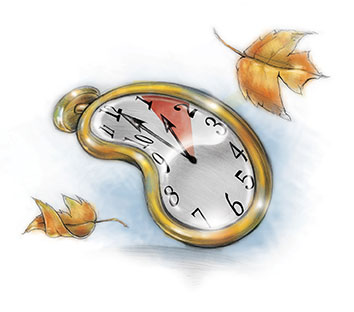The Science Behind Fall

Fred Matamoros (The Orange County Register/MCT)
Falls brings about many familiar changes. The weather becomes colder, leaves change color and fall, and daylight shortens. Why does any of this happen?
Many of fall’s changes occur because of the colder temperatures. But why are temperatures colder?
The changing of seasons – and therefore temperatures – is caused by Earth’s tilt. As Earth moves around the sun on its annual revolution, certain parts of the world get a more focused amount of sunshine and longer daylight hours.
During summer for the United States, North America has much of the sun’s light focused on it. Come fall, the Earth is at a different part of its revolution and another area of the world is beginning to experience summer.
Australia, for example, experiences summer from December to February.
The colder weather causes changes in leaves. Leaves are green in the spring and summer because of the chlorophyll in their cells. When the length of daylight shortens and the weather gets colder, leaves stop making chlorophyll. The true colors of the leaves are exposed.
So yes, leaves have autumnal colors all year, but they are disguised with chlorophyll during the spring and summer.
Meanwhile, animals spend fall preparing for the winter. Many birds, such as Canadian geese, raptors, and hawks, migrate south for warmer weather in the winter.
Other animals, like squirrels and chipmunks, store seeds to eat during the winter months. Bears and bats fatten up before entering a full hibernation, during which they rarely leave their dens until spring.
Another fall change for most of the U.S. is gaining an hour of sleep. The transition from daylight savings time to standard time occurs on the first Sunday of November.
Daylight savings was not as widely accepted throughout the country before the U.S. Uniform Time Act of 1966 as it is now. Before 1966, different cities changed their clocks on different days, if at all. The law did not require states to adopt daylight savings, but it required the states that did to move their clocks on the same day.
But why have daylight savings at all? Daylight savings was originally adopted as a way to save energy during World War I.
Today, however, the data about whether daylight savings actually lowers energy use is confusing. Some people simply find it nice to have an extra hour of light in the evening come spring.
Many people think of October and November as the fall months, but the season doesn’t officially end until December twenty-first.
The colors of fall are summed up by William Cullen Bryant: “Autumn… the year’s last, loveliest smile.”

Amélie Lemay '20 hopes to keep the Harriton community up-to-date on all things science and tech. She was a staff writer in 9th grade and an assistant...

